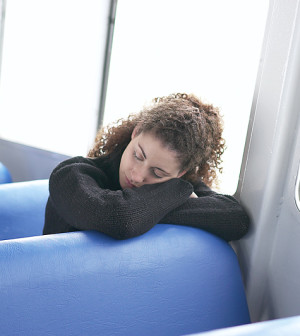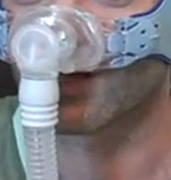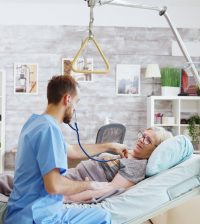- Double Mastectomy May Offer No Survival Benefit to Women With Breast Cancer
- Toxic Lead Found in Cinnamon Product, FDA Says
- Certain Abbott Blood Sugar Monitors May Give Incorrect Readings
- Athletes Can Expect High Ozone, Pollen Counts for Paris Olympics
- Fake Oxycontin Pills Widespread and Potentially Deadly: Report
- Shingles Vaccine Could Lower Dementia Risk
- Your Odds for Accidental Gun Death Rise Greatly in Certain States
- Kids From Poorer Families Less Likely to Survive Cancer
- Tough Workouts Won’t Trigger Cardiac Arrest in Folks With Long QT Syndrome
- At-Home Colon Cancer Test Can Save Lives
Sleep Apnea Treatment May Help Patients Look Better


FRIDAY, Sept. 13Treatment for sleep apnea may do more than improve your sleep and health: It could help you look better, according to a small new study.
Sleep apnea affects millions of American adults. The condition, which often goes undiagnosed, is marked by snoring and breathing interruptions during sleep. People with sleep apnea are at increased risk for heart problems and daytime accidents.
This study included 20 middle-aged sleep apnea patients whose facial appearance was rated before and after they started using a treatment called continuous positive airway pressure (CPAP), which helps keep the airway open by providing a stream of air through a mask that is worn during sleep.
Improvements in the patients’ faces were noted just a few months after they started using CPAP, according to the study published in the Journal of Clinical Sleep Medicine.
These changes included: looking more alert, more youthful, more attractive, having less-puffy foreheads and less-red faces.
The findings need to be confirmed in larger studies, the researchers said. They decided to conduct their study because sleep center staff often noted improvements in patients’ faces after they began using CPAP.
“The common lore, that people ‘look sleepy’ because they are sleepy, and that they have puffy eyes with dark circles under them, drives people to spend untold dollars on home remedies,” study leader and sleep neurologist Dr. Ronald Chervin, director of the University of Michigan Sleep Disorders Center, said in a university news release.
“We perceived that our CPAP patients often looked better, or reported that they’d been told they looked better, after treatment. But no one has ever actually studied this,” said Chervin, a professor of sleep medicine and of neurology.
Interestingly, the patients in the study did not show significant changes in facial features typically associated with sleepiness.
“We were surprised that our approach could not document any improvement, after treatment, in tendency to have dark blue circles or puffiness under the eyes,” Chervin said.
More information
The U.S. National Heart, Lung, and Blood Institute has more about continuous positive airway pressure.
Source: HealthDay
Copyright © 2024 HealthDay. All rights reserved.










